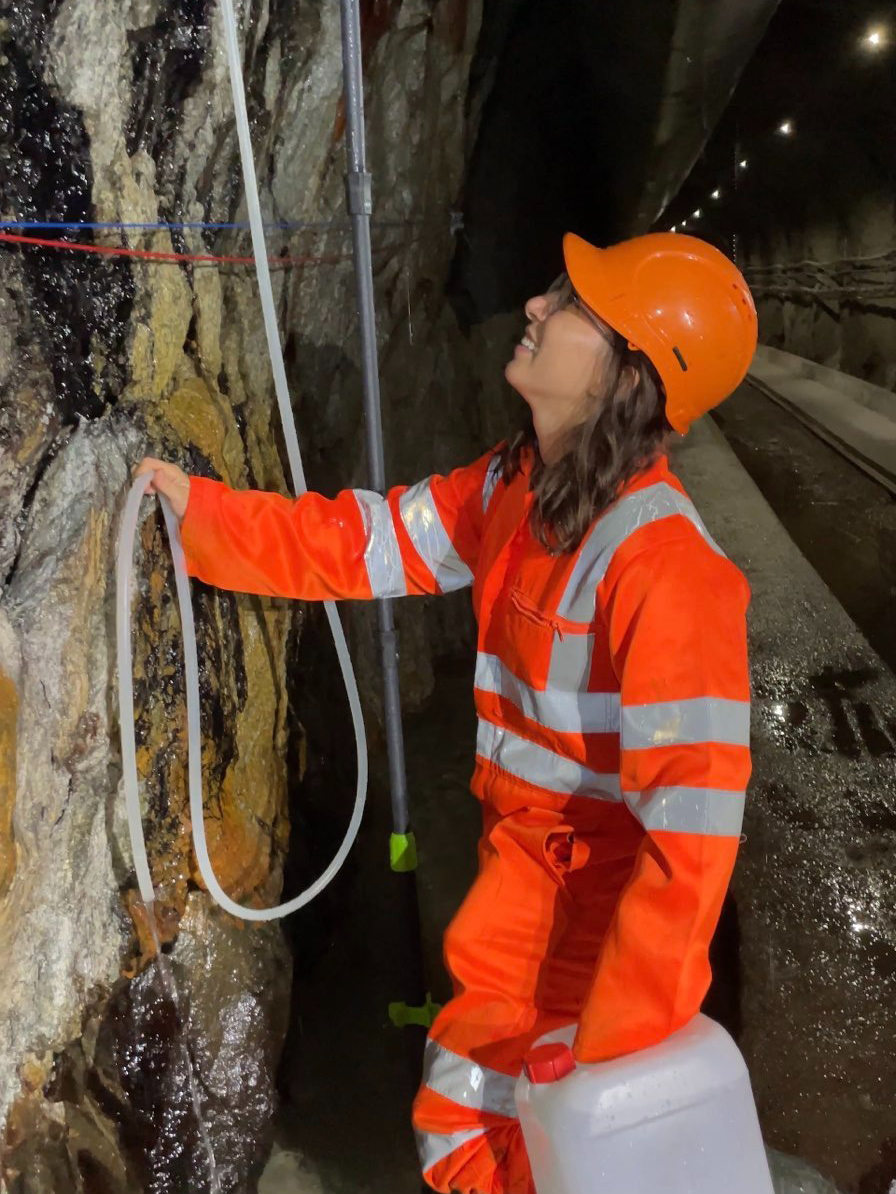2024-02-27
Looking deep into rocks and distant planets: geobiological research in the BedrettoLab

Cara Magnabosco is a professor in geobiology and together with her group she conducts research in the BedrettoLab. Cara is particularly interested in subsurface environments and looks for simple life-forms such as bacteria or other microorganisms that can survive by “breathing rocks”. One of the central questions she is exploring is under which conditions life can emerge and survive. In the BedrettoLab, she and her team have already found some fascinating and rare microorganisms. They are performing a variety of experiments to learn more about their lifestyle.
What is your research in the BedrettoLab about?
My research journey in the BedrettoLab started in 2020. In general, in my field, to get access to “deep ecosystems” is not easy. So, to have the BedrettoLab in such close distance and with almost permanent access is a big opportunity. At the beginning, we just wanted to find out what is there, in the boreholes and in the water that flows through the various fractures. We began to take many water samples to get an idea of the sampled water, where it originates from and what the chemistry looks like. Our aim is to identify energy sources in the water or on the rock surface that can feed microorganisms. Such energy sources include for example CO2 or nitrogen, which can be found in different amounts throughout the tunnel.
Once we got a better idea of what is existing, we also started to examine the effects of hydraulic stimulations on the microbiome, a term for the microogranisms that exist in a particular environment. We observed changes in the water chemistry and microbial populations during stimulations. Now, we maintain a geobiological monitoring borehole and “observe” the water chemistry and biology on a long-term basis with different permanent measuring installations. In this borehole we perform various experiments to better understand how the microorganisms in the BedrettoLab survive and evolve.
We have also installed additional monitoring stations to see if there are seasonal or experimental-associated changes in the system. We called the entire setup “DELOS” which stands for “Deep Life Observatory”, a tribute to the Greek island that shares the same name and prohibited dying. The microorganisms living in Bedretto’s DELOS have refused to die, even though they are hundreds to thousands of meters away from the sun and the surface.
What tools and methods do you use?
My team usually turns up in the tunnel with buckets and lots of bottles. With those vessels, we take our water samples directly from the boreholes or from a water source somewhere in the tunnel. Then we take the samples to our laboratory here at ETH Zurich and analyze them. This means that we look at water drops under the microscope, we do chemical analyzes or, if we identify interesting microorganisms, we try to cultivate them and do DNA sequencing. As we collect lots of data about the DELOS ecosystem as a whole, we also use machine learning to combine these data with the DNA analyses. Machine learning algorithms help us to identify patterns and ultimately connections between the environment or changes in it that lead to changes in the microorganisms, e.g. bacteria, and the occurrences of certain life forms.
Did you discover anything surprising during your research in the BedrettoLab?
We have found a large population of a set of extremely interesting ultra-small bacteria. They have extremely small genomes compared to complex life-forms such as plants and are among the smallest life-forms on earth. So, we are wondering, why exactly those bacteria do occur here, what do they need to survive and where are they originating from.
During the hydraulic stimulations we have also discovered a change in the water chemistry that is quite likely coming from the new fractures created in the rock. This means, when the rock breaks, a reaction is set in motion in which water molecules are split and hydrogen and oxygen is set free. What comes out is a highly reactive liquid that offers energy for potential life. We are wondering, if this was maybe an energy source for early life.
With your “Center for Origin and Prevalence of Life” you also open your eyes to other planets and the possibility of extraterrestrial life. What does your research have to do with life on other planets?
The reaction that I described earlier, where silicate rock, like the Rotondo granite and water react to produce bio-chemical energy, is quite generic. This means that it could also occur in the subsurface of other planets and power alternative ecosystems. This reaction pathway makes the existence of extra-terrestrial life more likely for example on Mars.

